Zijun Long
RoboEye: Enhancing 2D Robotic Object Identification with Selective 3D Geometric Keypoint Matching
Sep 18, 2025Abstract:The rapidly growing number of product categories in large-scale e-commerce makes accurate object identification for automated packing in warehouses substantially more difficult. As the catalog grows, intra-class variability and a long tail of rare or visually similar items increase, and when combined with diverse packaging, cluttered containers, frequent occlusion, and large viewpoint changes-these factors amplify discrepancies between query and reference images, causing sharp performance drops for methods that rely solely on 2D appearance features. Thus, we propose RoboEye, a two-stage identification framework that dynamically augments 2D semantic features with domain-adapted 3D reasoning and lightweight adapters to bridge training deployment gaps. In the first stage, we train a large vision model to extract 2D features for generating candidate rankings. A lightweight 3D-feature-awareness module then estimates 3D feature quality and predicts whether 3D re-ranking is necessary, preventing performance degradation and avoiding unnecessary computation. When invoked, the second stage uses our robot 3D retrieval transformer, comprising a 3D feature extractor that produces geometry-aware dense features and a keypoint-based matcher that computes keypoint-correspondence confidences between query and reference images instead of conventional cosine-similarity scoring. Experiments show that RoboEye improves Recall@1 by 7.1% over the prior state of the art (RoboLLM). Moreover, RoboEye operates using only RGB images, avoiding reliance on explicit 3D inputs and reducing deployment costs. The code used in this paper is publicly available at: https://github.com/longkukuhi/RoboEye.
Zero-Shot Interactive Text-to-Image Retrieval via Diffusion-Augmented Representations
Jan 26, 2025



Abstract:Interactive Text-to-Image Retrieval (I-TIR) has emerged as a transformative user-interactive tool for applications in domains such as e-commerce and education. Yet, current methodologies predominantly depend on finetuned Multimodal Large Language Models (MLLMs), which face two critical limitations: (1) Finetuning imposes prohibitive computational overhead and long-term maintenance costs. (2) Finetuning narrows the pretrained knowledge distribution of MLLMs, reducing their adaptability to novel scenarios. These issues are exacerbated by the inherently dynamic nature of real-world I-TIR systems, where queries and image databases evolve in complexity and diversity, often deviating from static training distributions. To overcome these constraints, we propose Diffusion Augmented Retrieval (DAR), a paradigm-shifting framework that bypasses MLLM finetuning entirely. DAR synergizes Large Language Model (LLM)-guided query refinement with Diffusion Model (DM)-based visual synthesis to create contextually enriched intermediate representations. This dual-modality approach deciphers nuanced user intent more holistically, enabling precise alignment between textual queries and visually relevant images. Rigorous evaluations across four benchmarks reveal DAR's dual strengths: (1) Matches state-of-the-art finetuned I-TIR models on straightforward queries without task-specific training. (2) Scalable Generalization: Surpasses finetuned baselines by 7.61% in Hits@10 (top-10 accuracy) under multi-turn conversational complexity, demonstrating robustness to intricate, distributionally shifted interactions. By eliminating finetuning dependencies and leveraging generative-augmented representations, DAR establishes a new trajectory for efficient, adaptive, and scalable cross-modal retrieval systems.
Understanding and Mitigating Human-Labelling Errors in Supervised Contrastive Learning
Mar 10, 2024
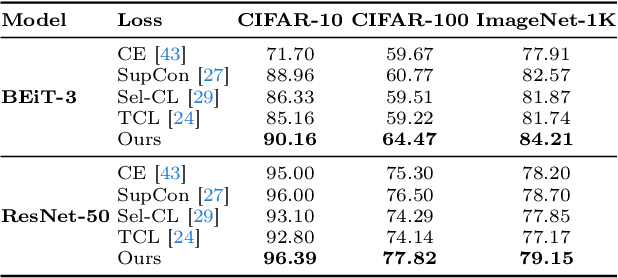


Abstract:Human-annotated vision datasets inevitably contain a fraction of human mislabelled examples. While the detrimental effects of such mislabelling on supervised learning are well-researched, their influence on Supervised Contrastive Learning (SCL) remains largely unexplored. In this paper, we show that human-labelling errors not only differ significantly from synthetic label errors, but also pose unique challenges in SCL, different to those in traditional supervised learning methods. Specifically, our results indicate they adversely impact the learning process in the ~99% of cases when they occur as false positive samples. Existing noise-mitigating methods primarily focus on synthetic label errors and tackle the unrealistic setting of very high synthetic noise rates (40-80%), but they often underperform on common image datasets due to overfitting. To address this issue, we introduce a novel SCL objective with robustness to human-labelling errors, SCL-RHE. SCL-RHE is designed to mitigate the effects of real-world mislabelled examples, typically characterized by much lower noise rates (<5%). We demonstrate that SCL-RHE consistently outperforms state-of-the-art representation learning and noise-mitigating methods across various vision benchmarks, by offering improved resilience against human-labelling errors.
Text2Pic Swift: Enhancing Long-Text to Image Retrieval for Large-Scale Libraries
Feb 28, 2024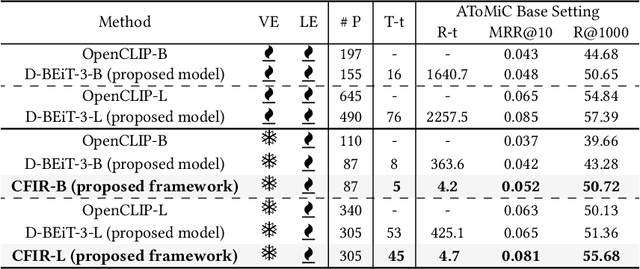
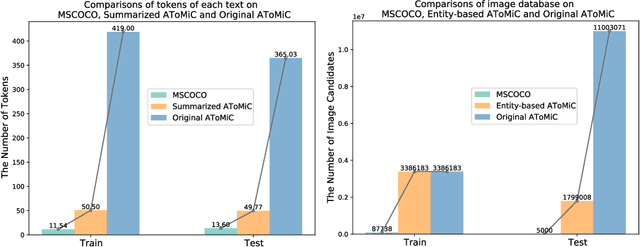

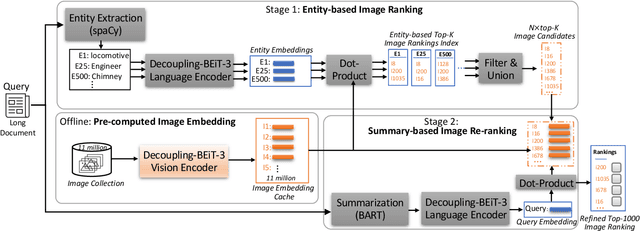
Abstract:Text-to-image retrieval plays a crucial role across various applications, including digital libraries, e-commerce platforms, and multimedia databases, by enabling the search for images using text queries. Despite the advancements in Multimodal Large Language Models (MLLMs), which offer leading-edge performance, their applicability in large-scale, varied, and ambiguous retrieval scenarios is constrained by significant computational demands and the generation of injective embeddings. This paper introduces the Text2Pic Swift framework, tailored for efficient and robust retrieval of images corresponding to extensive textual descriptions in sizable datasets. The framework employs a two-tier approach: the initial Entity-based Ranking (ER) stage addresses the ambiguity inherent in lengthy text queries through a multiple-queries-to-multiple-targets strategy, effectively narrowing down potential candidates for subsequent analysis. Following this, the Summary-based Re-ranking (SR) stage further refines these selections based on concise query summaries. Additionally, we present a novel Decoupling-BEiT-3 encoder, specifically designed to tackle the challenges of ambiguous queries and to facilitate both stages of the retrieval process, thereby significantly improving computational efficiency via vector-based similarity assessments. Our evaluation, conducted on the AToMiC dataset, demonstrates that Text2Pic Swift outperforms current MLLMs by achieving up to an 11.06% increase in Recall@1000, alongside reductions in training and retrieval durations by 68.75% and 99.79%, respectively.
CLCE: An Approach to Refining Cross-Entropy and Contrastive Learning for Optimized Learning Fusion
Feb 22, 2024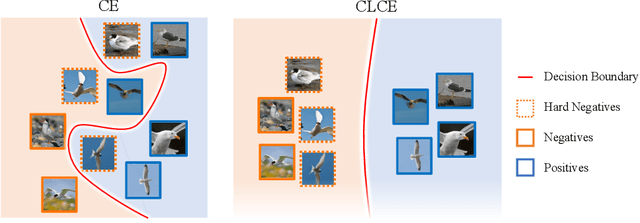


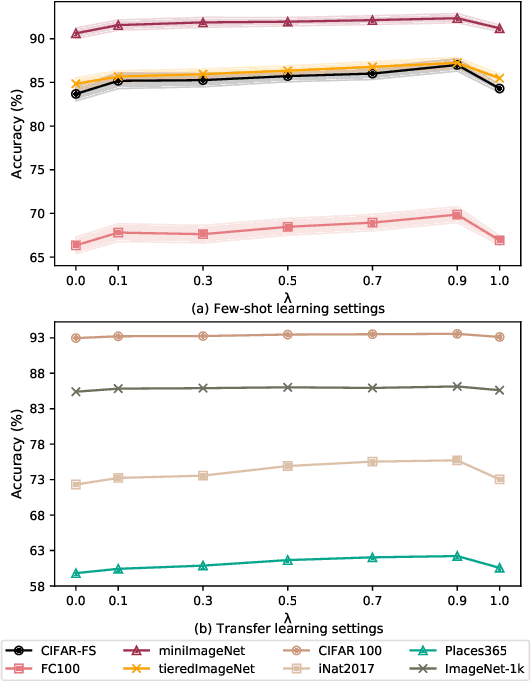
Abstract:State-of-the-art pre-trained image models predominantly adopt a two-stage approach: initial unsupervised pre-training on large-scale datasets followed by task-specific fine-tuning using Cross-Entropy loss~(CE). However, it has been demonstrated that CE can compromise model generalization and stability. While recent works employing contrastive learning address some of these limitations by enhancing the quality of embeddings and producing better decision boundaries, they often overlook the importance of hard negative mining and rely on resource intensive and slow training using large sample batches. To counter these issues, we introduce a novel approach named CLCE, which integrates Label-Aware Contrastive Learning with CE. Our approach not only maintains the strengths of both loss functions but also leverages hard negative mining in a synergistic way to enhance performance. Experimental results demonstrate that CLCE significantly outperforms CE in Top-1 accuracy across twelve benchmarks, achieving gains of up to 3.52% in few-shot learning scenarios and 3.41% in transfer learning settings with the BEiT-3 model. Importantly, our proposed CLCE approach effectively mitigates the dependency of contrastive learning on large batch sizes such as 4096 samples per batch, a limitation that has previously constrained the application of contrastive learning in budget-limited hardware environments.
CrisisViT: A Robust Vision Transformer for Crisis Image Classification
Jan 05, 2024Abstract:In times of emergency, crisis response agencies need to quickly and accurately assess the situation on the ground in order to deploy relevant services and resources. However, authorities often have to make decisions based on limited information, as data on affected regions can be scarce until local response services can provide first-hand reports. Fortunately, the widespread availability of smartphones with high-quality cameras has made citizen journalism through social media a valuable source of information for crisis responders. However, analyzing the large volume of images posted by citizens requires more time and effort than is typically available. To address this issue, this paper proposes the use of state-of-the-art deep neural models for automatic image classification/tagging, specifically by adapting transformer-based architectures for crisis image classification (CrisisViT). We leverage the new Incidents1M crisis image dataset to develop a range of new transformer-based image classification models. Through experimentation over the standard Crisis image benchmark dataset, we demonstrate that the CrisisViT models significantly outperform previous approaches in emergency type, image relevance, humanitarian category, and damage severity classification. Additionally, we show that the new Incidents1M dataset can further augment the CrisisViT models resulting in an additional 1.25% absolute accuracy gain.
Elucidating and Overcoming the Challenges of Label Noise in Supervised Contrastive Learning
Nov 25, 2023Abstract:Image classification datasets exhibit a non-negligible fraction of mislabeled examples, often due to human error when one class superficially resembles another. This issue poses challenges in supervised contrastive learning (SCL), where the goal is to cluster together data points of the same class in the embedding space while distancing those of disparate classes. While such methods outperform those based on cross-entropy, they are not immune to labeling errors. However, while the detrimental effects of noisy labels in supervised learning are well-researched, their influence on SCL remains largely unexplored. Hence, we analyse the effect of label errors and examine how they disrupt the SCL algorithm's ability to distinguish between positive and negative sample pairs. Our analysis reveals that human labeling errors manifest as easy positive samples in around 99% of cases. We, therefore, propose D-SCL, a novel Debiased Supervised Contrastive Learning objective designed to mitigate the bias introduced by labeling errors. We demonstrate that D-SCL consistently outperforms state-of-the-art techniques for representation learning across diverse vision benchmarks, offering improved robustness to label errors.
Large Multi-modal Encoders for Recommendation
Nov 03, 2023



Abstract:In recent years, the rapid growth of online multimedia services, such as e-commerce platforms, has necessitated the development of personalised recommendation approaches that can encode diverse content about each item. Indeed, modern multi-modal recommender systems exploit diverse features obtained from raw images and item descriptions to enhance the recommendation performance. However, the existing multi-modal recommenders primarily depend on the features extracted individually from different media through pre-trained modality-specific encoders, and exhibit only shallow alignments between different modalities - limiting these systems' ability to capture the underlying relationships between the modalities. In this paper, we investigate the usage of large multi-modal encoders within the specific context of recommender systems, as these have previously demonstrated state-of-the-art effectiveness when ranking items across various domains. Specifically, we tailor two state-of-the-art multi-modal encoders (CLIP and VLMo) for recommendation tasks using a range of strategies, including the exploration of pre-trained and fine-tuned encoders, as well as the assessment of the end-to-end training of these encoders. We demonstrate that pre-trained large multi-modal encoders can generate more aligned and effective user/item representations compared to existing modality-specific encoders across three multi-modal recommendation datasets. Furthermore, we show that fine-tuning these large multi-modal encoders with recommendation datasets leads to an enhanced recommendation performance. In terms of different training paradigms, our experiments highlight the essential role of the end-to-end training of large multi-modal encoders in multi-modal recommendation systems.
RoboLLM: Robotic Vision Tasks Grounded on Multimodal Large Language Models
Oct 16, 2023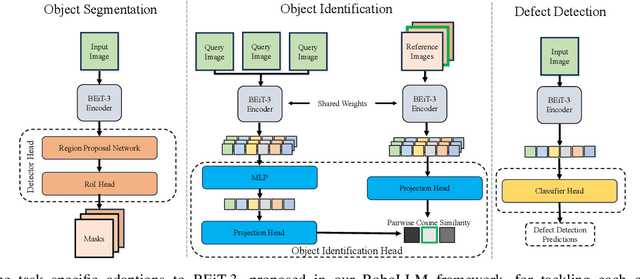
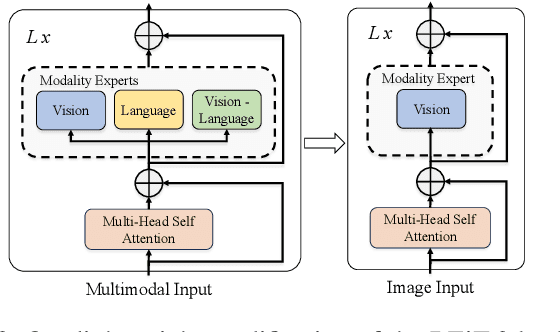
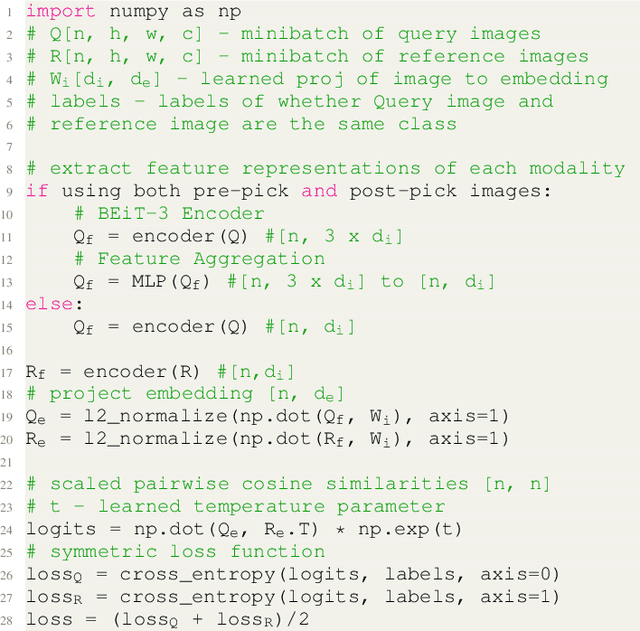
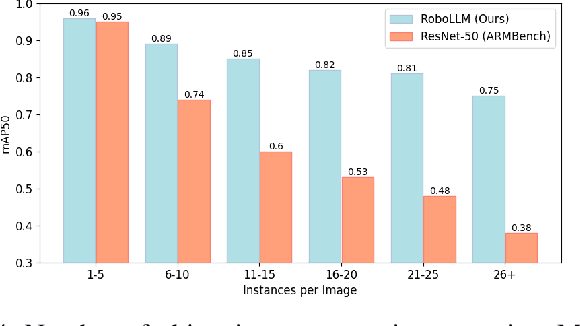
Abstract:Robotic vision applications often necessitate a wide range of visual perception tasks, such as object detection, segmentation, and identification. While there have been substantial advances in these individual tasks, integrating specialized models into a unified vision pipeline presents significant engineering challenges and costs. Recently, Multimodal Large Language Models (MLLMs) have emerged as novel backbones for various downstream tasks. We argue that leveraging the pre-training capabilities of MLLMs enables the creation of a simplified framework, thus mitigating the need for task-specific encoders. Specifically, the large-scale pretrained knowledge in MLLMs allows for easier fine-tuning to downstream robotic vision tasks and yields superior performance. We introduce the RoboLLM framework, equipped with a BEiT-3 backbone, to address all visual perception tasks in the ARMBench challenge-a large-scale robotic manipulation dataset about real-world warehouse scenarios. RoboLLM not only outperforms existing baselines but also substantially reduces the engineering burden associated with model selection and tuning. The source code is publicly available at https://github.com/longkukuhi/armbench.
MultiWay-Adapater: Adapting large-scale multi-modal models for scalable image-text retrieval
Sep 12, 2023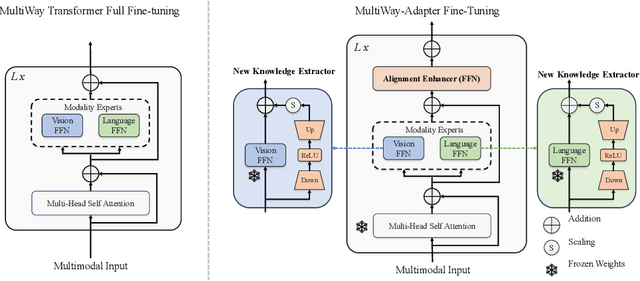


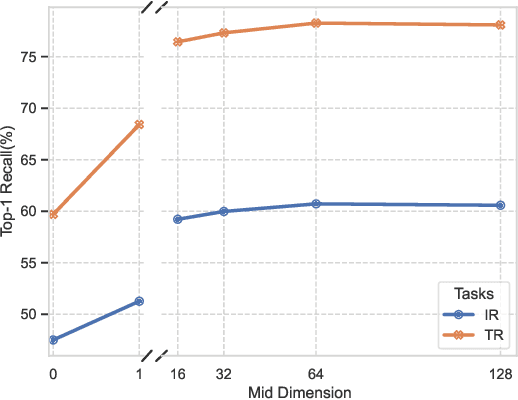
Abstract:As the size of Large Multi-Modal Models (LMMs) increases consistently, the adaptation of these pre-trained models to specialized tasks has become a computationally and memory-intensive challenge. Traditional fine-tuning methods require isolated, exhaustive retuning for each new task, limiting the models' versatility. Moreover, current efficient adaptation techniques often overlook modality alignment, focusing only on the knowledge extraction of new tasks. To tackle these issues, we introduce Multiway-Adapter, an innovative framework incorporating an 'Alignment Enhancer' to deepen modality alignment, enabling high transferability without tuning pre-trained parameters. Our method adds fewer than 1.25\% of additional parameters to LMMs, exemplified by the BEiT-3 model in our study. This leads to superior zero-shot image-text retrieval performance compared to fully fine-tuned models, while achieving up to a 57\% reduction in fine-tuning time. Our approach offers a resource-efficient and effective adaptation pathway for LMMs, broadening their applicability. The source code is publicly available at: \url{https://github.com/longkukuhi/MultiWay-Adapter}.
 Add to Chrome
Add to Chrome Add to Firefox
Add to Firefox Add to Edge
Add to Edge